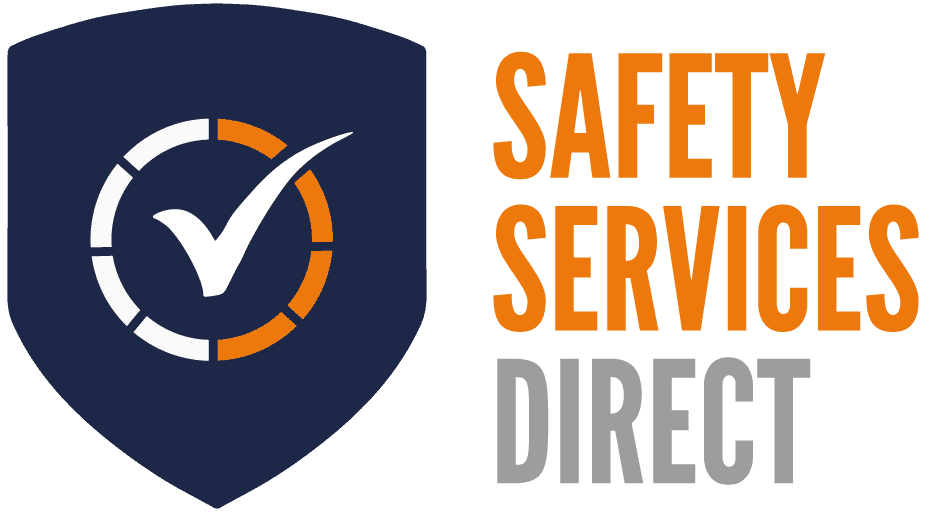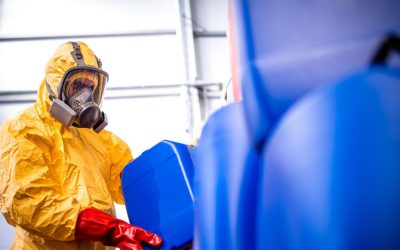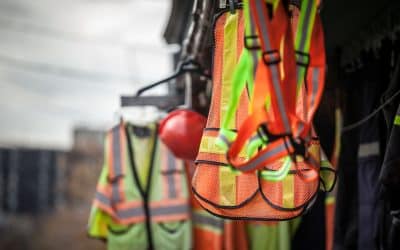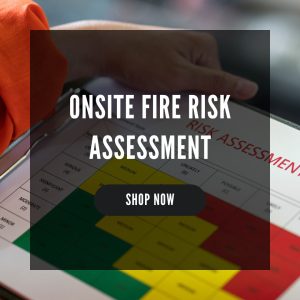When it comes to occupational safety, the term “PPE” is often thrown around. But what does PPE stand for, and why is it so important?
In this blog, we unravel the meaning of PPE, dive into what’s included, the industries that require PPE, and navigate the intricate landscape of regulations surrounding its use. Since PPE is designed to protect employees, a clear understanding of PPE is both legally and ethically required. So, let’s dive in!
What is PPE?
PPE stands for Personal Protective Equipment. PPE refers to specialised clothing, equipment, or gear designed to protect individuals from various hazards, injuries, or infections in the workplace or other environments. The primary purpose of PPE is to create a barrier between the wearer and potential risks, ensuring their safety and well-being.
What is Included in PPE?
PPE can include a wide range of items, depending on the nature of the work or the specific risks involved. Common types of PPE include:
- Head Protection: Helmets or hard hats to protect against head injuries from falling objects or impacts.
- Eye and Face Protection: Safety glasses, goggles, or face shields to shield the eyes and face from debris, chemicals, or other hazards.
- Hearing Protection: Earplugs or earmuffs to reduce exposure to loud noises and prevent hearing damage.
- Respiratory Protection: Masks or respirators to protect against inhaling harmful substances, such as dust, fumes, or airborne particles.
- Hand and Arm Protection: Gloves, sleeves, or other hand and arm coverings to safeguard against cuts, abrasions, chemicals, or other hand-related hazards.
- Foot and Leg Protection: Safety boots or shoes to protect against impact, punctures, or other foot and leg injuries.
- Body Protection: Coveralls, vests, or other garments to shield the body from various hazards, including chemicals, heat, or biological contaminants.
The use of PPE is often guided by specific regulations and standards depending on the industry and the nature of the work your organisation is involved in. Individuals need to be trained on the proper use, maintenance, and disposal of PPE to ensure its effectiveness in protecting against potential risks.
The Importance of PPE
Personal Protective Equipment plays a pivotal role in ensuring safety across diverse environments and industries. From construction sites to healthcare facilities, the primary function of PPE is to minimise risks and mitigate potential hazards. By understanding the significance of PPE, individuals can safeguard their well-being in the face of occupational challenges.
Tip: To fully understand the importance of Personal Protective Equipment, read our blog on the topic!
PPE Regulations in the UK
In the United Kingdom, PPE use (and misuse) is governed by a robust set of laws and regulations. These regulations are in place to ensure that individuals and organisations prioritise safety and adhere to prescribed standards, creating a secure working environment.
Navigating the guidelines set forth by these regulations is critical for maintaining a high occupational safety standard. Here’s an in-depth look at the key PPE regulations in the UK:
Personal Protective Equipment at Work Regulations 1992 (as amended in 2002):
The cornerstone of PPE regulations in the UK is the Personal Protective Equipment at Work Regulations 1992. This legislation places a legal obligation on employers to provide suitable PPE to employees exposed to various risks that cannot be adequately controlled by other means. The regulations mandate employers to conduct thorough risk assessments, provide appropriate PPE free of charge, and ensure that it is properly maintained and used correctly.
Health and Safety at Work etc. Act 1974:
The Health and Safety at Work etc. Act 1974 is a comprehensive piece of legislation that sets out the general duties of employers, employees, and others towards health and safety in the workplace. It provides the legal framework within which specific regulations, including those related to PPE, operate. The Act places a duty on employers to ensure, so far as is reasonably practicable, the health, safety, and welfare of employees.
PPE Regulation (EU) 2016/425:
While the UK has left the European Union, the PPE Regulation (EU) 2016/425 was implemented before the Brexit transition period ended. This regulation establishes the requirements that PPE must meet to be placed on the market within the European Economic Area (EEA). It covers the design, manufacture, and conformity assessment of PPE. In the UK, this regulation was adopted into law to ensure continuity and consistency in standards.
The Management of Health and Safety at Work Regulations 1999:
These regulations complement the PPE regulations by requiring employers to assess and manage risks to employees’ health and safety, including providing PPE where necessary. The emphasis is on a systematic and proactive approach to health and safety management, ensuring a comprehensive understanding of risks and appropriate control measures.
Regulatory Compliance and Enforcement:
Regulatory bodies, such as the Health and Safety Executive (HSE), conduct inspections, offer guidance to employers, and have the authority to take legal action against those who fail to comply with the regulations. Employers are encouraged to collaborate with these bodies to ensure continuous improvement in occupational safety standards.
Importance of PPE Compliance and Adherence
Compliance with PPE regulations is a legal obligation and a commitment to the workforce’s well-being. Adhering to prescribed standards ensures that the protective clothing and equipment provided is fit for purpose, effectively mitigating risks and hazards. It fosters a culture of safety within organisations, instilling confidence among employees, clients, and stakeholders. Non-compliance, on the other hand, can lead to legal repercussions, financial penalties, and, more importantly, compromised safety in the workplace.
Common Industries Requiring PPE
If your industry exposes workers to physical risks, safety equipment is likely required, but the types of PPE required often depend on the nature of the work and the potential risks involved. Here are some common industries where the use of PPE is required and what is needed:
-
- Construction Industry: Hard hats, safety glasses, high-visibility clothing, steel-toed boots, gloves, hearing protection, respiratory protection and fall protection equipment.
- Healthcare and Medical Services: Protective gloves, masks, face shields, goggles, gowns, aprons, head covers, shoe covers and respiratory protective equipment.
- Manufacturing and Engineering: Safety goggles, gloves, hearing protection, steel-toed boots, respiratory protection, head protection and protective clothing.
- Oil and Gas Industry: Flame-resistant clothing, hard hats, safety glasses, steel-toed boots, gloves and respiratory protection.
- Agriculture: Gloves, eye protection, hearing protection, respiratory protection, safety footwear and head protection.
- Chemical and Hazardous Materials Handling: Chemical-resistant gloves, goggles, face shields, chemical-resistant clothing and respiratory protection.
- Emergency Services (Firefighters, Police, EMS): Fire-resistant clothing, safety helmets, gloves, eye protection, respiratory protection and body armour.
- Mining Industry: Hard hats, safety glasses, gloves, respiratory protection, high-visibility clothing and steel-toed boots.
- Electrical Industry: Insulated gloves, safety glasses, face shields, flame-resistant clothing and insulated footwear.
- Transportation and Logistics: High-visibility clothing, safety footwear, gloves, hearing protection and head protection.
- Welding and Metalworking: Welding helmets, welding gloves, flame-resistant clothing, safety glasses, safety harnesses and respiratory protection.
- Food Processing Industry: Hairnets, gloves, aprons, safety footwear and eye protection.
PPE requirements can vary within each industry, along with the safety hazards that workers are exposed to, and employers should conduct thorough risk assessments to determine the appropriate protective measures for their workers.
Challenges in PPE Implementation
Implementing a robust PPE program is not without challenges. One significant hurdle is the lack of awareness and training on the proper use and maintenance of PPE. As employees must wear PPE correctly for the equipment worn to do their jobs, comprehensive knowledge is crucial. This issue can be addressed through comprehensive training programs that emphasise the importance of PPE and provide clear guidelines.
Another challenge is the financial aspect, as costs associated with purchasing, maintaining, and replacing PPE can strain budgets for both employers and employees. Solutions involve exploring cost-effective options and emphasising the long-term benefits of investing in worker safety.
Ill-fitting or uncomfortable PPE poses another challenge, leading to potential non-compliance among workers. Prioritising well-fitted and comfortable PPE, along with involving employees in the selection process, can help overcome this issue.
Does Your Business Need PPE?
Workplace hazards and risks are part of the job, but they need to be carefully mitigated, both for legal compliance and workplace safety. So, to protect your employees and your business, invest in PPE with Safety Services Direct. We have a broad range of products for all your safety needs.
To find out how we can improve workplace safety across the board, contact us or call us at 0121 756 6568.









